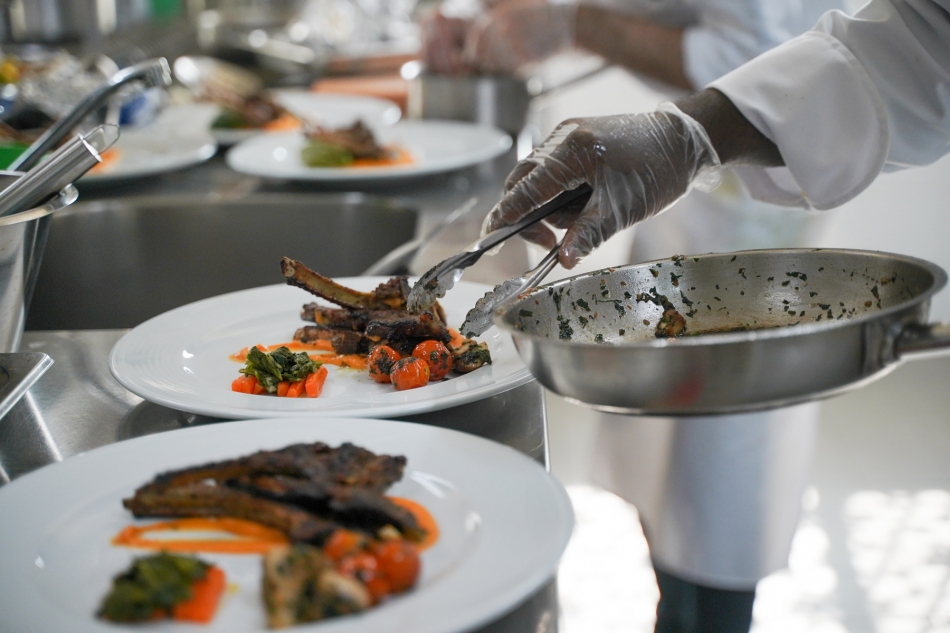
Local food for healthy locals
Muscat: Hospitality is deeply rooted in Oman. Throughout history, visitors to an Omani home would be greeted with a warm welcome and offers of dates and coffee – a tradition that still holds to this day.
This cultural heritage has allowed the Sultanate to build a thriving tourism sector. However, such success has come at a price. Local food production has struggled over the years to keep up with rising demand, prompting the hospitality sector to rely on imports.
Although contributions from the agricultural and fisheries sectors to the Omani economy have more than doubled during the past decade, competition from imported food products has added to the existing challenges facing the farming sector, which constitutes the main source of livelihood for many communities in the Sultanate.
Water scarcity, high temperatures, soil and water salinity, as well as unsustainable agricultural practices, are all affecting the productivity of the agricultural sector. Moreover, the vast majority of Omani farms are small and family-owned and face a number of barriers, such as limited access to financial services and market integration.
To help offset these challenges, the Food and Agriculture Organization of the United Nations (FAO) and its partners have initiated a number of projects designed to encourage the production and consumption of healthy food products and improve the livelihoods of farmers and food producers in Oman.
Master Chef
One such project is the Oman Chef Competition, which has been held yearly since 2013 to celebrate the country’s culinary talents. The theme of the latest edition (held in December 2021) was “Think local, buy local, eat local.” FAO joined forces with the Oman Tourism Development Company (better known as OMRAN), Oman Tourism College and Celebrate Oman Co. to encourage local food production and consumption as part of FAO’s Better Nutrition initiative.

A total of 89 professional sous-chefs employed by hotels across the country were tasked with preparing gourmet dishes using only local food products. Thirty per cent of these contestants were women, a notable increase compared to previous years.
Prior to the start of the competition, each chef was given a list of ingredients from which they could select to cook a dish of their choice. Upon being told about the rules, many of them called it an impossible task, believing that there weren’t enough local products to complete their dishes. But as they started reading through the ingredient list, they soon realized that Oman produces enough varied food to accommodate their creativity.
Issa Al Balushi, one of the judges presiding over the competition, remarked: “It was a great chance for the competing chefs to work with and experience local products from Oman, which I hope will play a larger role in similar future initiatives in the Sultanate.”
Local ingredients
One of the competition’s entries was pan-seared chicken breast with mashed potatoes and grilled spring vegetables (tomatoes, carrots, zucchini and eggplant).
Nearly half of the ingredients that are required for this relatively straightforward dish would normally come from abroad. For instance, the chicken, the seasoning, eggplant and potatoes, all of which are usually imported from countries across the region, were replaced with products from local farmers.


Another entry involved pan-seared fish with lime butter sauce, broccoli puree and sautéed mushrooms. Fish from the Indian Ocean is a common staple among the country’s coastal communities and features largely in Omani cuisine. This particular dish replaced the normally imported butter and onions with equivalents supplied by local farmers. As a matter of fact, some of the products, such as butter, vegetables and mixed spices, were procured from a group of women farmers in the northern and southern Al Batinah governorates of the Sultanate.
Needless to say, the competition dispelled any concerns that Oman does not produce a broad enough variety of food products.
“This competition proves that all ingredients that we need to cook meals, whether they be for everyday sustenance or a competition, can be sourced locally,” said Mohamed Shamis Al Rawahi, one of the lead organizers of the event. “The more we purchase local food products, the more they’ll be produced, and hopefully be able to compete with – and eventually substitute – our reliance on imported goods,” he said.
The results are already starting to be seen. The competition has opened new prospects for the Oman Tourism Development Company to capitalize on locally sourced products in its hotel chains, hopefully creating a positive trend across the Sultanate.
Connecting farmers and buyers
FAO also assisted with the organization of a farmers’ market designed to showcase some of the products and ingredients used in the competition.
In addition to the farmers themselves, the market featured a total of 30 key players along the value chain. This provided producers with an invaluable opportunity to connect with potential buyers in the hospitality sector.
FAO strengthened its presence in Oman in 2012 with the opening of a country representation and is helping transform its agri-food systems to achieve better production, better nutrition, a better environment and a better life. FAO also supports Oman’s farmers and rural communities to strengthen their agricultural livelihoods and produce healthy, nutritious food for the country.
Source: the FAO News and Media office





